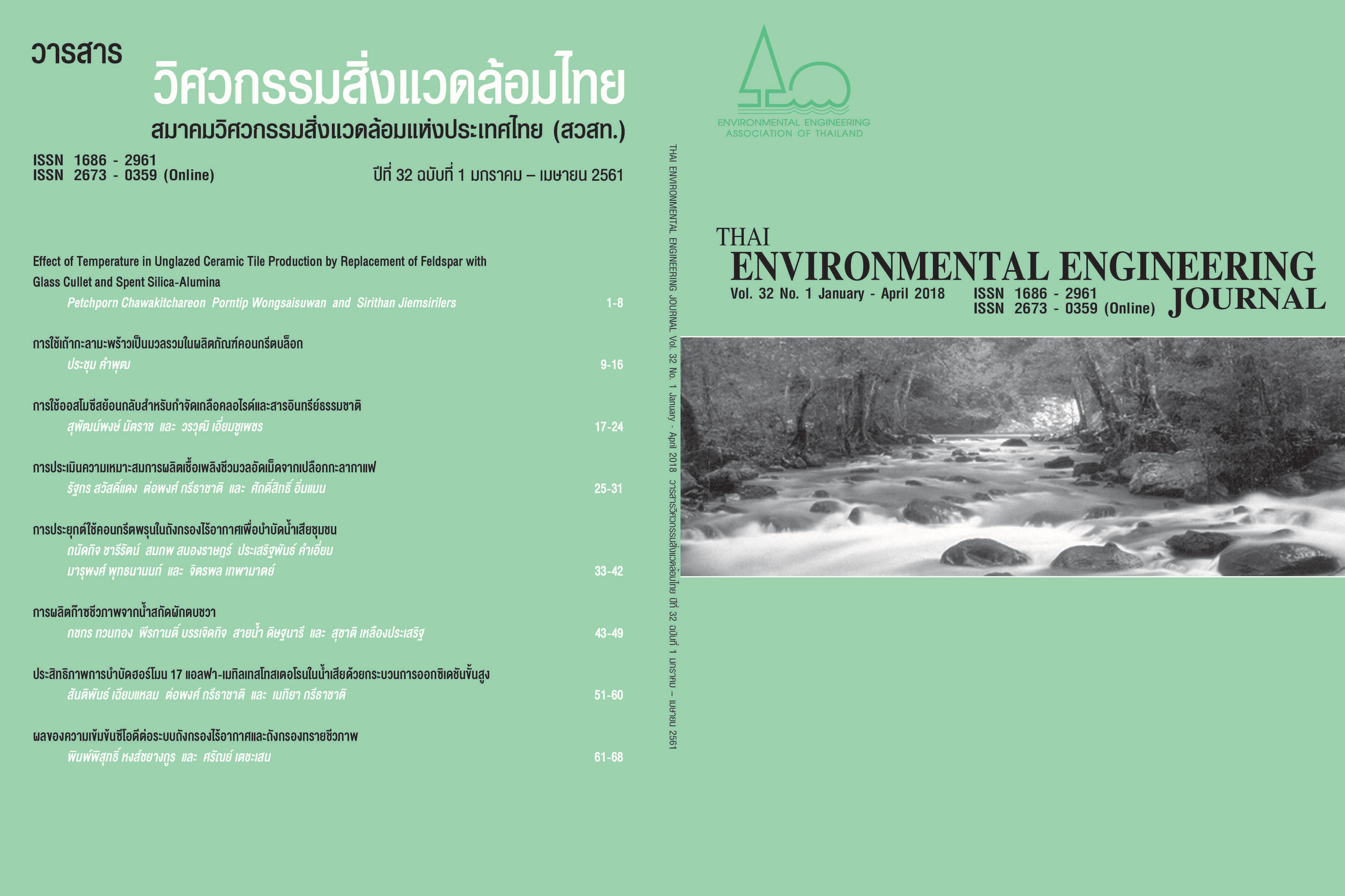Treatment Efficiency of 17 Alpha-Methyltestosterone in Aqueous Solution by Advanced Oxidation Processes
Main Article Content
Abstract
This research aimed to study the optimum conditions for removal of 17 alpha-methyltestosterone (MT) by using advanced oxidation processes (AOPs), i.e. photolysis, ozonation and photocatalytic ozonation, were employed to treat MT at the initial concentrations of 3.0 mg/L. The results show the optimum conditions for treating MT by AOPs: (1) photolysis at pH condition did not affect the efficiency of MT treatment, it can treat over 95% of all pH ranges until cannot be measured (detection limit of HPLC is 0.1 ppm) within 30 min, (2) ozonation at pH 5.0 and ozone dose 400 mg/hr; this optimum conditions can treat 72.9% within 60 min, and (3) photocatalytic ozonation at pH 5.0 and ozone dose 400 mg/hr can treat until cannot be measured within 15 min. For the comparison of efficacy of all processes, it was found that photocatalytic ozonation was the most efective process for MT treatment followed by photolysis and ozonation, respectively. Moreover, the kinetic of all 3 processes was found to be the first-order reaction.
Article Details
References
[2] Yenpoeng, T., Prompakdee, W., Ngamvongchon, S. and Wattanamahard, T. 2013. Study on hormone (17 alpha methyltestosterone) residue level of sex reversal Nile tilapia, Oreochromis niloticus (Linn.) seed production in the water recirculation system. Inland Fisheries Research and Development Bureau, Department of Fisheries. (in Thai)
[3] Soe, K.L., Soe, M. and Gluud, C. 1992. Liver pathology associated with the use of anabolic-androgenic steroids. Liver Int. 12: 73-79.
[4] Kang, I.J., Yokota, H., Oshima, Y., Tsuruda, Y., Shimasaki, Y. and Honjo, T. 2008. The effects of methyltestosterone on the sexualdevelopment and reproduction of adult medaka (Oryzias latipes). Aquat. Toxicol. 87: 37-46.
[5] Vulliet, E., Falletta, M., Marote, P., Lomberget, T., Paisse, J.O. and Loustalot, M.F.G. 2010. Light induced degradation of testosterone in waters. Sci. Total Environ. 408: 3554-3559.
[6] De Laat, J.E. and Dore, M. 1994. Degradation of chloroethanes in dilute aqueous solution by H2O2/UV. Water Res. 28(12): 2507-2519.
[7] Kajitvichyanukul, P. 2005. Application of advanced oxidation processes as pretreatment method for medical wastewater. Department of Environmental Engineering, King Mongkut's University of Technology Thonburi. (in Thai)
[8] Bledzaka, D., Gmurek, M., Olak, M., Miller, J.S. and Ledakowicz, S. 2010. Photodegradation and advanced oxidation of endocrine disruptors in aqueous solutions. Catal. Today. 151: 125-130.
[9] Ku, Y., Su, W.J. and Shen, Y.S. 1996. Decomposition kinetics of ozone in aqueous solution. Ind. Eng. Chem. Res. 35: 3369-3374.


